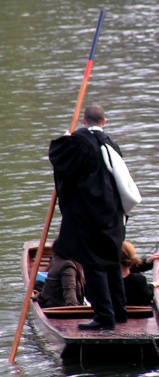Especialidades JA/Remo/Respuestas
| Remo | ||
|---|---|---|
| Asociación General
|
Destreza: 2 Año de introducción: 1956 |
|
Requisitos
|
La especialidad de Remo es un componente de la Maestría Acuática. |
1
Para consejos e instrucciones, véase Natación II.
2
2a
2b
3
3a
3b
3c
Adventist Youth Honors Answer Book/Knot/Clove hitch/es
Adventist Youth Honors Answer Book/Knot/Round turn/es
Adventist Youth Honors Answer Book/Knot/Two half hitches/es
Adventist Youth Honors Answer Book/Knot/Bowline/es
Adventist Youth Honors Answer Book/Knot/Hitching tie/es
4
5
6
Dory
Dory Skiff
The "dory skiff" is another variation of the dory type. For inshore work the transom was widened, freeboard was lowered and more rocker introduced into the bottom making an exceptionally easy-to-row boat that was more stable (initial stability not ultimate stability) than their offshore cousins. However they are not as seaworthy as the Swampscott or Banks dories.
There are many types of Dory boats sometimes named after the towns they were designed and built in. The term skiff is used, and has been used, to refer to many various types of seemingly unrelated small boats.
One current usage of skiff is to refer to a typically small flat-bottomed open boat with a pointed bow and a flat stern originally developed as an inexpensive and easy to build boat for use by inshore fishermen. Originally designed to be powered by rowing, their form has developed so that they are efficiently powered by outboard motors. The design is still in common use today for both work and pleasure craft.
Dinghy
A dinghy is a type of small boat, often carried or towed by a larger vessel. The term can also refer to small racing yachts or recreational open sailing boats. Utility dinghies are usually rowboats or have an outboard motor, but some are rigged for sailing. Because the smaller sailing dinghy responds more quickly to maneuvers, it is more suitable for beginner training in sailing than full-sized sloops.
Dinghies usually range in length from 2 to 6 meters. Larger auxiliary vessels are generally called tenders, pinnaces or lifeboats. Folding and take-down multi-piece (nesting) dinghies are used where space is limited. Some newer dinghies have much greater buoyancy, giving them more carrying capacity than older boats of the same size.
Punt
A punt is a flat-bottomed boat with a square-cut bow, designed for use in small rivers or other shallow water. Punting refers to boating in a punt. The punter generally propels the punt by pushing against the river bed with a pole.
Punts were originally built as cargo boats or platforms for fowling and angling but in modern times their use is almost exclusively confined to pleasure trips on the rivers in the university towns of Oxford and Cambridge in England and races at a few summer regattas on the Thames.
Pram
A pram is a small utility boat with a squarish rather than pointed bow. This type of pram provides a more efficient use of space than does a traditional skiff of the same size.
7
A rowlock (British, pronounced /ˈrɒlək/) or oarlock (US) is a brace that attaches an oar to a boat. When a boat is rowed, the rowlock acts as a fulcrum, and, in doing so, the propulsive force that the rower exerts on the water with the oar is transferred to the boat by the thrust force exerted on the rowlock.
On ordinary rowing craft, the rowlocks are attached to the gunwales. In the sport of rowing, the rowlocks are attached to outriggers (often just called "riggers"), which project from the boat and provide better leverage. In sport rowing, the rowlocks are normally U-shaped and attached to a vertical pin which allows the rowlock to pivot around the pin during the rowing stroke. They additionally have a locking mechanism across the top of the "U" to prevent the oar from unintentionally popping out of the rowlock.
Originally rowlocks were two wooden posts that the shaft of the oar nestled between.
thole pin, a wooden pin fixed in the gunwale of a rowing boat to which, by means of a grommet, an oar is held when it is being pulled. A more usual method is to use two thole pins close together, with the oar between them.
Pin locks are not recommended beacuase the oar could pop out and if the rowwer lets go could drift away. So having a ring lock or a clamp on top of a u lock would make rowing safer.
8
There is less wind resistance (drag). This increases your speed and increases your endurance. It will also reduce the likelihood of catching a crab in rough conditions (that is, catching the blade on the surface of the water as you try to bring it forward for the next stroke).
9
10
11
12
References
Rowing Safety Chapter 1-4 http://youtu.be/vVOCsfJna3Q Chapter 5 http://youtu.be/cmlpzKqJVEM Canadian Rowing Clubs (most offer lessons) http://rowingcanada.org/member-services/join-club
- Categoría: Tiene imagen de insignia
- Adventist Youth Honors Answer Book/Honors/es
- Adventist Youth Honors Answer Book/es
- Adventist Youth Honors Answer Book/Skill Level 2/es
- Categoría: Libro de respuestas de especialidades JA/Especialidades introducidas en 1956
- Adventist Youth Honors Answer Book/General Conference/es
- Adventist Youth Honors Answer Book/Recreation/es
- Adventist Youth Honors Answer Book/Recreation/Primary/es
- Adventist Youth Honors Answer Book/Stage 0/es
- Adventist Youth Honors Answer Book/Aquatic Master Award/es
- AY Honors/Prerequisite/Swimming - Intermediate/es
- AY Honors/See Also/Swimming - Intermediate/es
- Adventist Youth Honors Answer Book


